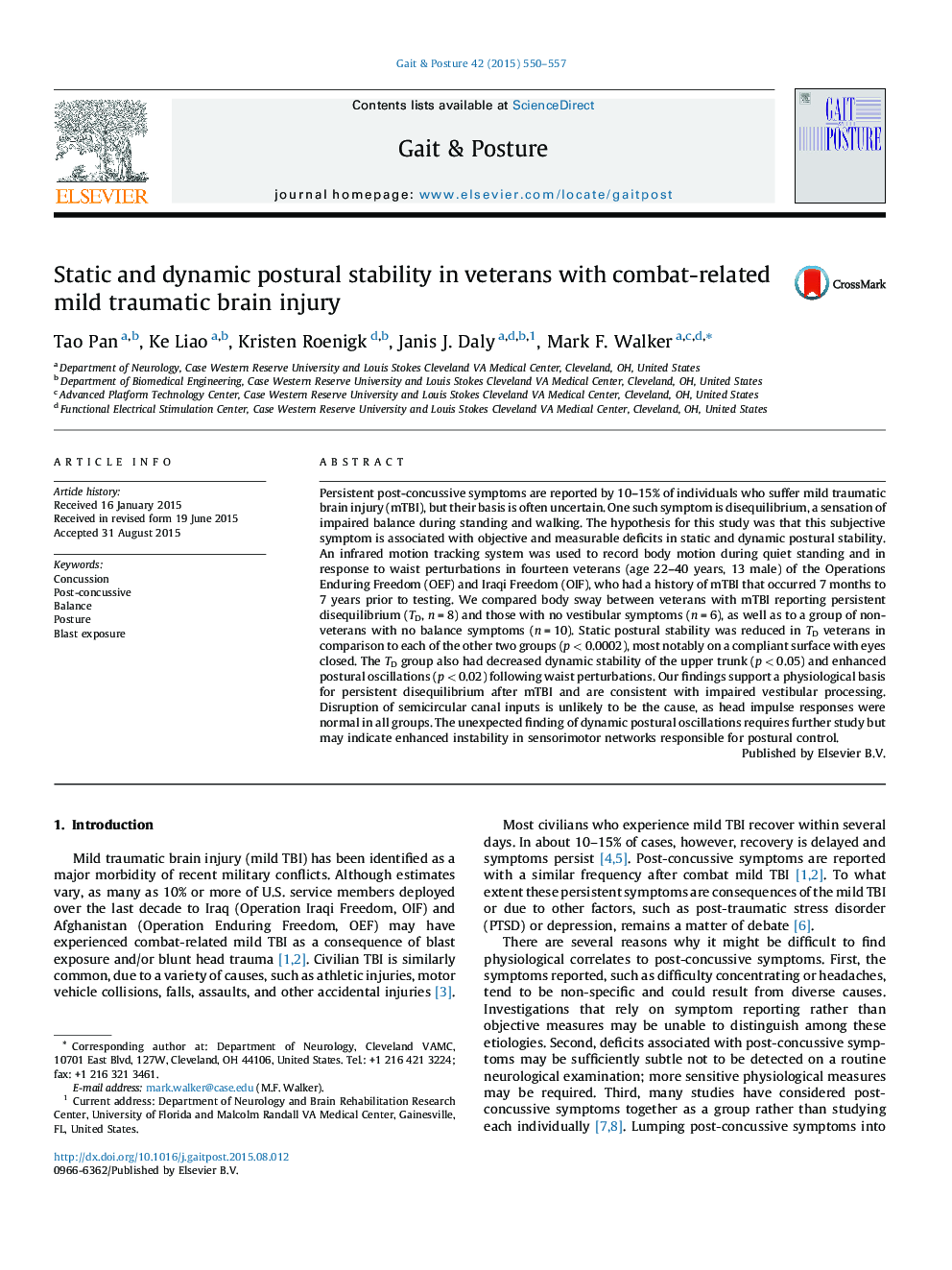| کد مقاله | کد نشریه | سال انتشار | مقاله انگلیسی | نسخه تمام متن |
|---|---|---|---|---|
| 4055752 | 1265628 | 2015 | 8 صفحه PDF | دانلود رایگان |
• We studied balance in veterans with mild TBI with and without disequilibrium.
• Veterans with disequilibrium have reduced static and dynamic postural stability.
• This postural instability is similar to that in patients with vestibular dysfunction.
• Veterans with disequilibrium also have postural oscillations following perturbations.
Persistent post-concussive symptoms are reported by 10–15% of individuals who suffer mild traumatic brain injury (mTBI), but their basis is often uncertain. One such symptom is disequilibrium, a sensation of impaired balance during standing and walking. The hypothesis for this study was that this subjective symptom is associated with objective and measurable deficits in static and dynamic postural stability. An infrared motion tracking system was used to record body motion during quiet standing and in response to waist perturbations in fourteen veterans (age 22–40 years, 13 male) of the Operations Enduring Freedom (OEF) and Iraqi Freedom (OIF), who had a history of mTBI that occurred 7 months to 7 years prior to testing. We compared body sway between veterans with mTBI reporting persistent disequilibrium (TD, n = 8) and those with no vestibular symptoms (n = 6), as well as to a group of non-veterans with no balance symptoms (n = 10). Static postural stability was reduced in TD veterans in comparison to each of the other two groups (p < 0.0002), most notably on a compliant surface with eyes closed. The TD group also had decreased dynamic stability of the upper trunk (p < 0.05) and enhanced postural oscillations (p < 0.02) following waist perturbations. Our findings support a physiological basis for persistent disequilibrium after mTBI and are consistent with impaired vestibular processing. Disruption of semicircular canal inputs is unlikely to be the cause, as head impulse responses were normal in all groups. The unexpected finding of dynamic postural oscillations requires further study but may indicate enhanced instability in sensorimotor networks responsible for postural control.
Journal: Gait & Posture - Volume 42, Issue 4, October 2015, Pages 550–557
